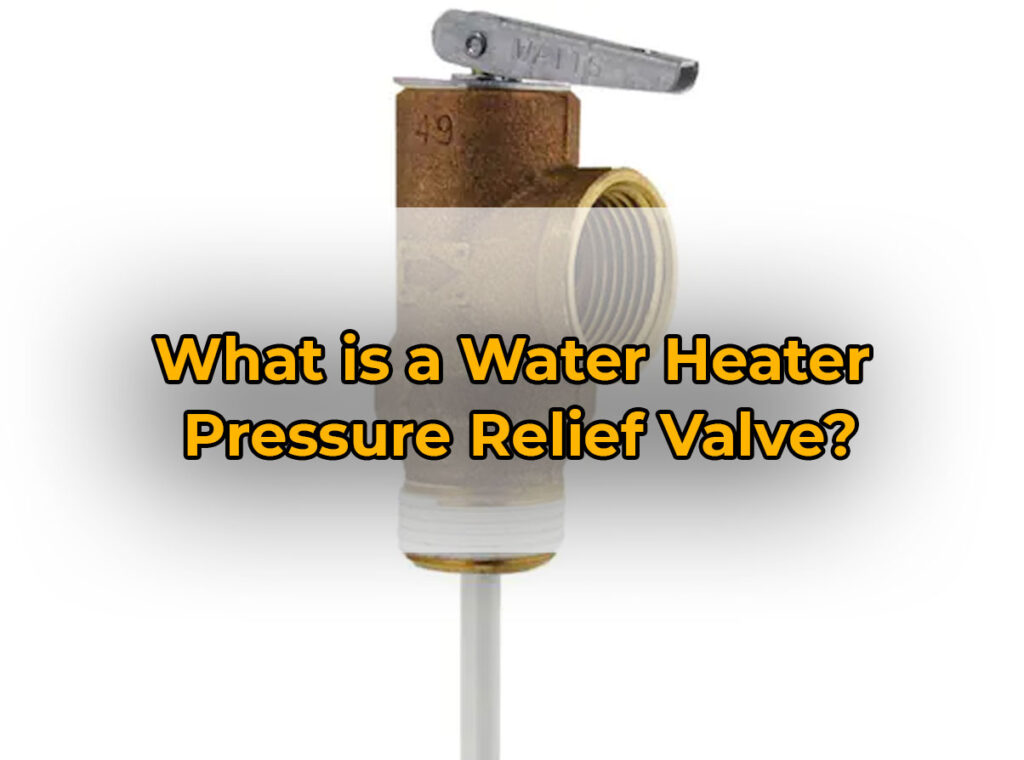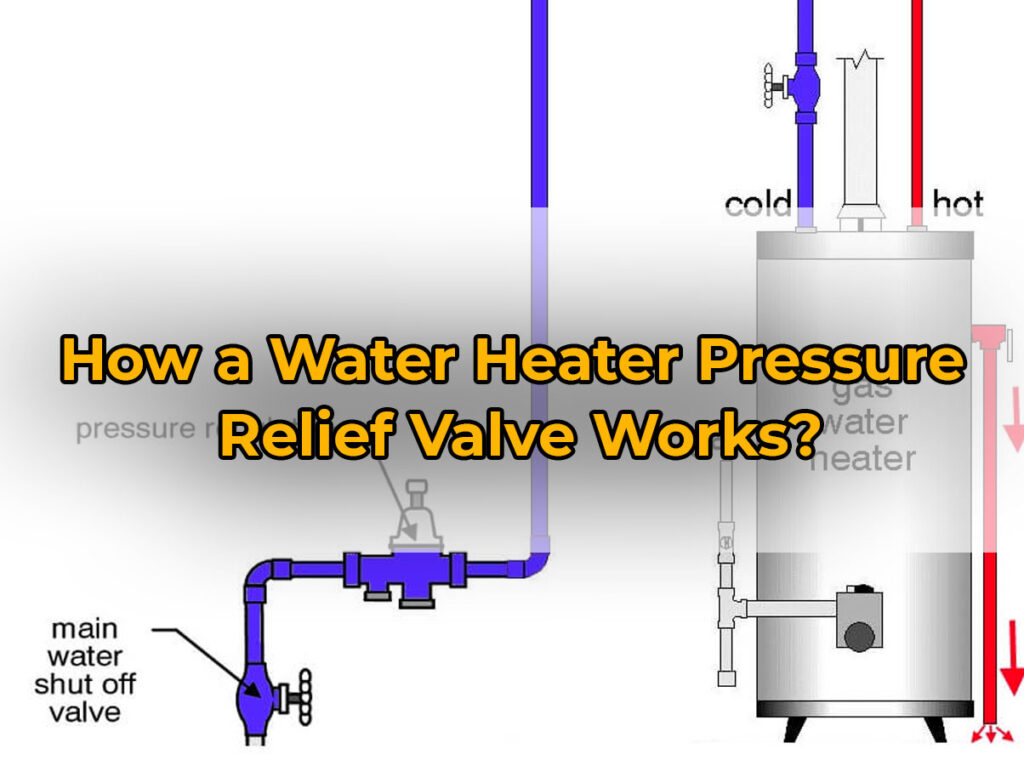The water heater pressure relief valve is a must-have in every water heating system. It releases extra pressure that builds up inside the tank, stopping it from exploding. It’s a safety feature all homeowners should know about and check regularly.
It works by activating at a certain temp and pressure, so it may wear out. Inspecting it every six months is a must. Flushing out sediments around it or lubricating it with oil can help issues. If there’s visible damage, call a professional.
Ignoring a faulty valve can be fatal. A 2013 analysis by HomeServe USA showed 25,000 significant home water incidents in America daily were caused by broken pressure valves on your bathroom.
Without this valve, your water heater would be better off as a rocket engine!
What is a Water Heater Pressure Relief Valve?

To understand the purpose and components of a water heater pressure relief valve, you need to know how it works.
In order to prevent a catastrophic failure of your water heater that can cause damage to your home and safety risks, it is essential to learn the importance of this valve.
1. Purpose of a Water Heater Pressure Relief Valve
Water Heater Pressure Relief Valves are essential for safety. They release built-up pressure in the tank, meaning it won’t explode due to overheating or pressure. If the valve gets clogged or corroded, it may not open when needed, risking explosions, fires, or flooding.
It’s important to check and replace the valve periodically. With proper maintenance, it can last for years. Homeowners should keep an eye on it and get help if something looks off.
The first Pressure Relief Valve was invented in 1907 by Edwin Ruud. It improved water heater safety and avoided damages from overheating. Today’s valves have been upgraded with modern features like on best electric tankless water heater for better performance and longevity.
2. Components of a Water Heater Pressure Relief Valve
The Water Heater Pressure Relief Valve is essential for regulating the pressure of the water supply. It stops the pressure from exceeding the tank’s capability, avoiding damage and accidents.
It consists of a valve body, seat, spring, and handle. The valve body is made of brass, copper, or steel and houses the components. The seat provides a seal to prevent and fixing hot water heater leaking . The spring is used to preset the blow-off pressure and the handle is used to manually operate or test the valve.
If the relief valve discharges, it may indicate a high-pressure issue that needs to be addressed by a professional. Regular inspection and maintenance can extend the life expectancy and prevent damage. This includes checking for leaks, corrosion, and damaged parts like seats or handles.
Installing temperature-pressure relief valves provides enhanced protection against accidents. Timely replacement of faulty components will also save you from costly repairs or replacements. Get a good Water Heater Pressure Relief Valve and make sure your home doesn’t turn into a sauna!
How a Water Heater Pressure Relief Valve Works?

To understand how a water heater pressure relief valve works, the solution lies in knowing more about its operating mechanism. It is also important to periodically test the valve for its functioning.
1. Operating Mechanism of a Water Heater Pressure Relief Valve
Water heaters come with special valves. They help prevent explosions and other damage. The valve opens when pressure rises too high. Then, it lets out excess water until it’s safe.
The temperature in the tank rises above normal. This causes a build-up of pressure. Inside the valve, a spring-loaded lever triggers release of the water. It flows out through a tube. Hot water overflows outside.
These devices need regular maintenance and inspection. That’s important because they help stop gas explosions from heating elements.
In 2020, The NFPA said around 2,600 home fires were caused by water heaters. Make sure to test your pressure relief valve. Unless you like to shower in boiling water!
2. Testing a Water Heater Pressure Relief Valve
Performing a Pressure Relief Valve Check for Your Water Heater
It’s important to check your water heater’s pressure relief valve regularly. Here’s how:
- Turn off the power and gas supply.
- Lift the lever on the valve briefly.
- You should hear a gurgling sound. If not, try again or replace the valve.
- Examine the discharge pipe for obstructions or leaks. Get a plumber if problems are found.
- Turn power and gas back on and you’re done!
This should be done at least annually due to mineral buildup. To avoid costly repairs, keep an eye on it.
If the valve doesn’t release water, low water pressure or a faulty thermostat might be the cause. Call an HVAC technician to diagnose and fix the issue.
Be sure never to block or cap off any part of the pressure relief system. It could cause explosions. For complicated heating systems, always consult a professional.
Why a Water Heater Pressure Relief Valve Malfunctions?
To understand why a water heater pressure relief valve malfunctions with common causes and symptoms of a malfunctioning pressure relief valve are essential.
Identifying common causes of pressure relief valve failure and symptoms of a malfunctioning pressure relief valve can help you fix the issue before it turns into a bigger problem for your water heating system.
1. Common Causes of Pressure Relief Valve Failure
Pressure Relief Valve: Common Culprits of Malfunctioning.
Feeling like a hot potato? Your water heater’s pressure relief valve might be on the fritz. Understanding why they may malfunction can help prevent any potential problems. Here are the common causes:
- Corrosion due to mineral and sediment buildup in water supply
- Overheating leading to excessive pressure
- Misadjustment of valve, causing inadequate or excessive pressure relief
- Age and wear and tear due to temperature cycling
- Manufacturer defects or improper installation
Routine maintenance and inspection are key to preventing any issues. Keep in mind that the lifespan of a typical valve varies based on usage and condition.
2. Symptoms of a Malfunctioning Pressure Relief Valve
If your water heater is malfunctioning, it could be due to a Pressure Relief Valve issue. Watch out for these signs:
- Leaking water around the valve
- High-pitched whistling sounds or water heater sounds like a tea kettle
- Inconsistent temperatures in hot water
- Bursting of the tank, if left untreated
Address these issues fast, or you’ll have bigger problems. A faulty Pressure Relief Valve can cause financial strain, with increased energy bills. It’s designed to protect against over-pressurization of the Tank. But sometimes, it fails.
Fixing a Malfunctioning Water Heater Pressure Relief Valve

To fix a malfunctioning water heater pressure relief valve with our guide, follow the two sub-sections for a solution: step-by-step guidance to repair a leaking pressure relief valve and how to replace a faulty relief valve.
1. Step-by-Step Guide to Fix a Leaking Pressure Relief Valve
If your water heater’s pressure relief valve isn’t working right, don’t fret! Follow these four simple steps:
- Turn off the power supply to the water heater.
- Gently remove the valve and inspect for any cracks or corrosion.
- If damaged or corroded, replace with one that fits your water heater’s specs.
- Reinstall the new valve and switch on the power to test it.
It’s essential to address a faulty valve ASAP. A leaking valve could mean too much pressure in the tank or an issue with the thermostat. Safety first! Wear protective gear when handling hot water heaters and valves.
A Pro Tip: Keep your water heater in good condition by routinely checking its components. This will help extend its lifespan and save you money on repairs.
When it comes to increase water pressure in shower, replacement is key! Don’t try to fix it- just replace it!
2. Replacing a Faulty Pressure Relief Valve
When a Pressure Relief Valve malfunctions, it’s important to fix it quickly for the smooth functioning of your water heater. Here’s a four-step guide for replacing a faulty valve:
- Turn off power – Check that the power source to your water heater is off.
- Drain the tank – Open a hot water faucet and let it run until no more hot water comes out. This will prevent scalding when removing the relief valve.
- Remove old valve – Use two wrenches to disconnect the old pressure relief valve from the pipes connecting it to your water heater.
- Install new valve – Screw in the new valve and make sure it fits snugly. Reconnect any pipes. Turn on power and refill the tank. Test for leaks.
When buying a replacement valve, make sure it’s rated for use with your model. Also, consider putting an water heater expansion tank on an incoming cold-water line. It can act as a buffer for pressure fluctuations.
Replacing a Faulty Pressure Relief Valve is important to prevent damages and expenses. Here’s a checklist to keep handy! For regular maintenance, take good care of your valve – you don’t want it to throw a tantrum!
Maintaining a Water Heater Pressure Relief Valve
To maintain the health and longevity of your water heater pressure relief valve, it is crucial to perform regular maintenance. In order to carry this out, knowing the importance of regular maintenance and having tips for maintaining a pressure relief valve can be extremely useful. These sub-sections will offer solutions to help you properly care for your pressure relief valve.
1. Importance of Regular Maintenance
Maintaining a water heater pressure relief valve is vital! It ensures the valve is functioning and can prevent explosions or pipe damage. If neglected, it may cause costly breakdowns and put you in danger. Check also: Hot Water Pressure Low But Cold Fine.
Prevention is key! Remove sediments and adjust temperature settings for effective valve function. A colleague’s story shows the importance of regular inspection and preventive maintenance to avoid similar situations. Prevent a hot mess by properly maintaining your pressure relief valve. C
2. Tips for Maintaining a Pressure Relief Valve
As a homeowner, keeping your water heater’s pressure relief valve in good condition is essential. Here are some tips that can help you maintain it:
- Do regular check-ups to avoid corrosion and sediment.
- Test the valve every year or two.
- Use a pressure gauge regularly.
- Replace the PRV after five years, if there were issues.
Safety first! Before attempting any maintenance, be sure to read manufacturer instructions.
Conclusion: The Importance of a Functioning Water Heater Pressure Relief Valve
A functioning water heater pressure relief valve is key. It releases excess pressure, stopping explosions or tank damage. Without it, serious injuries or property damage can occur. Plus, it prevents costly repairs from leaks.
It’s necessary to have a professional plumber inspect and maintain the relief valve often. Faulty or malfunctioning valves can cause issues to the whole system.
According to Angie’s List, “A failed T&P Valve could deny insurance coverage for subsequent water damage claims.” That’s why it’s important to have a trusty plumber check and change any parts needed, ASAP.
Investing in regular maintenance of the water heater pressure relief valve is an investment in your safety, your peace of mind, and your long-term savings.
Ensure this essential component works correctly at all times – for your own protection and your home’s.
At what PSI does a water heater pressure relief valve open?
Typically, a water heater pressure relief valve opens at around 150 PSI (pounds per square inch). However, some manufacturers may set their valves to open at slightly lower or higher pressures depending on their design and specifications.
It’s important to note that the exact opening point may vary due to factors such as altitude, temperature, and mineral build-up in the tank. Therefore, it’s recommended that homeowners check their manufacturer’s manual for specific details on their system’s operating pressures and settings.
Should a pressure relief valve be open or closed on a hot water heater?
In general, it is recommended that the pressure relief valve be left open at all times. This ensures that if there is any excess pressure in the tank, it will be able to escape safely through the valve. Keeping it closed can create dangerous situations where pressure builds up over time and potentially causes significant damage or even a catastrophic explosion.
It is important to note that leaving the valve open does not mean that water will leak out of your hot water heater constantly. Instead, it just provides an easy escape route for any excess pressure build-up inside the tank.
Why is water coming out of the pressure relief valve?
There are several reasons why water may be coming out of the pressure relief valve. One possible cause is that there is too much pressure inside the tank. This can happen if your hot water heater has been set too high or if there is a malfunctioning part such as a faulty thermostat or temperature gauge.
Another possibility is that there may be sediment buildup at the bottom of your tank, which can also cause excess pressure to build up.
I am a multi-talented designer and contractor with over 10 years of experience in the field. I have a passion for creating beautiful, innovative spaces that reflect my clients’ needs and styles. My skills include architectural design, interior design, space planning, project management and construction supervision.






